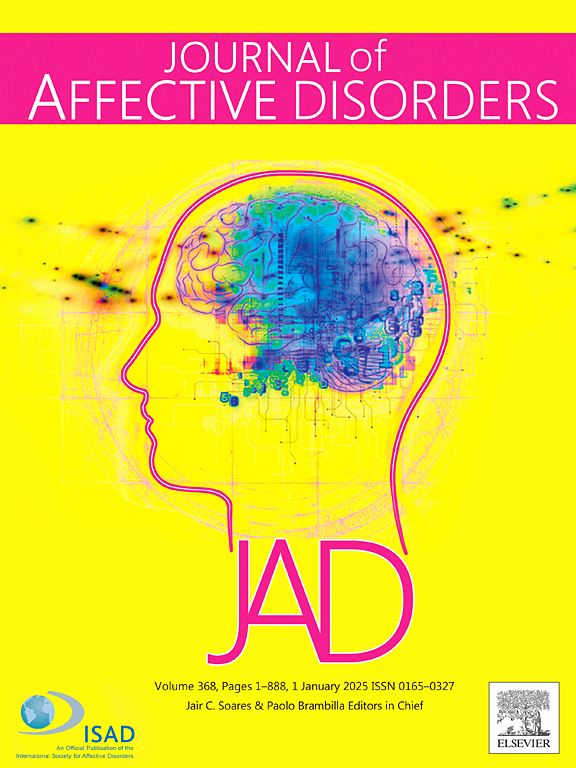Effects of neutrophils on the relationship between physical activity and depression: Evidence from cross-sectional study and mendelian randomization analysis
IF 4.9
2区 医学
Q1 CLINICAL NEUROLOGY
引用次数: 0
Abstract
Objective
Physical activity (PA) is suggested to reduce the risk of depression, and inflammation is believed to play an important role in this antidepressant effect. The current study aims to investigate the effect of neutrophils, one of the most important markers of inflammation, on the relationship between PA and depression.
Methods
We cross-sectionally analyzed 34,317 adults who participated in the National Health and Nutrition Examination Survey. The moderation and mediation effects of neutrophils on the relationship between PA and depression were assessed using a four-way decomposition approach. Additional Mendelian Randomization (MR) analysis was conducted to validate the potential causal mediation effect.
Results
PA was associated with lower odds of depression [Odds Ratio (OR): 0.67; 95 % Confidence Interval (CI): 0.56–0.79] and a lower level of neutrophils (OR: 0.83; 95 % CI: 0.77–0.90). Neutrophils were associated with higher odds of depression in a non-linear manner. While neutrophils did not modify the association between PA and depression, a significant mediating effect was observed. The influence of PA and neutrophils on depression was attributed to the controlled direct effect (96 % proportion) and the pure indirect effect (2 % proportion). MR analysis did not confirm a potential causal effect.
Conclusion
There is a close relationship between PA, neutrophils, and depression. The effect of PA on depression did not differ among participants with different levels of neutrophils. Although neutrophils mediated the association between PA and depression, this mediating effect was not causal. Other unknown factors closely related to neutrophils may be involved in this mediating process.
求助全文
约1分钟内获得全文
求助全文
来源期刊

Journal of affective disorders
医学-精神病学
CiteScore
10.90
自引率
6.10%
发文量
1319
审稿时长
9.3 weeks
期刊介绍:
The Journal of Affective Disorders publishes papers concerned with affective disorders in the widest sense: depression, mania, mood spectrum, emotions and personality, anxiety and stress. It is interdisciplinary and aims to bring together different approaches for a diverse readership. Top quality papers will be accepted dealing with any aspect of affective disorders, including neuroimaging, cognitive neurosciences, genetics, molecular biology, experimental and clinical neurosciences, pharmacology, neuroimmunoendocrinology, intervention and treatment trials.
 求助内容:
求助内容: 应助结果提醒方式:
应助结果提醒方式:


